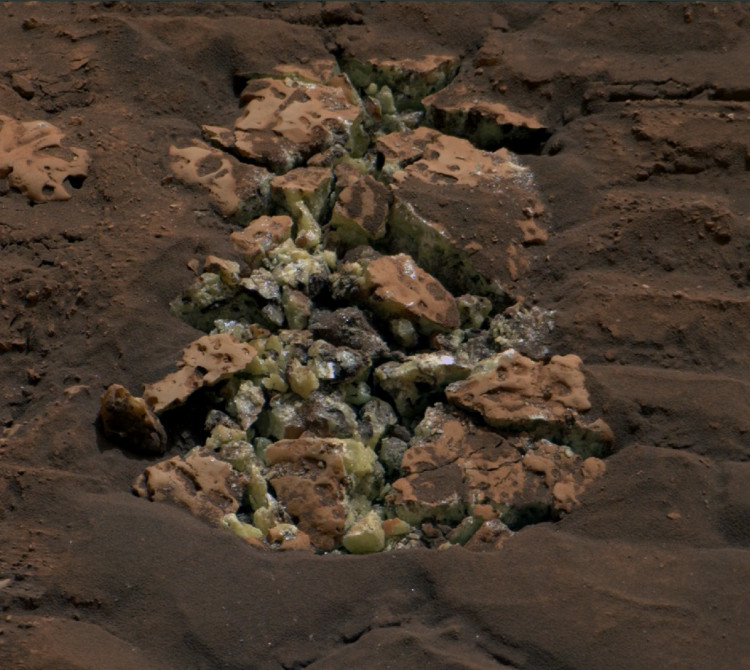In a striking discovery, NASA's Curiosity rover has stumbled upon something unprecedented on Mars-a rock containing pure elemental sulfur. This unexpected find has intrigued scientists and sparked a wave of curiosity about the Red Planet's geological history. The rover, weighing in at nearly 900 kilograms (1,982 pounds), accidentally crushed a rock in the Gediz Vallis Channel, revealing the yellow crystals of sulfur within.
"Finding a field of stones made of pure sulfur is like finding an oasis in the desert," remarked Ashwin Vasavada, the project scientist for Curiosity at NASA's Jet Propulsion Laboratory. "It shouldn't be there, so now we have to explain it. Discovering strange and unexpected things is what makes planetary exploration so exciting."
Sulfur is not new to Mars; sulfates, a combination of sulfur and other minerals, have been detected before. However, this is the first time sulfur has been found in its pure elemental form on Mars. The implications of this discovery are significant because pure sulfur only forms under very specific conditions, conditions that scientists did not previously associate with the region of Mars where Curiosity made its find.
The Gediz Vallis Channel, where the discovery was made, is littered with similar-looking rocks, suggesting that pure sulfur might be more abundant in this area than previously thought. This finding raises numerous questions about the geological processes that could have led to the formation of these sulfur deposits.
Curiosity has been exploring this sulfate-rich region of Mars since October 2023. Sulfates form when sulfur, typically in compound form, interacts with other minerals in water. As the water evaporates, these minerals dry out, leaving behind sulfate salts. These salts can provide valuable insights into the history of water on Mars and how the planet has weathered over time.
The presence of pure sulfur, however, suggests that there is a significant gap in our understanding of Mars' geological history. "There are, to be fair, a lot of things we don't know about the geological history of Mars," Vasavada noted. The discovery implies that there might be geological or chemical processes on Mars that scientists are not yet aware of.
Pure sulfur is an essential element for life, typically used by organisms in the form of sulfates to create amino acids necessary for protein synthesis. While this discovery does not directly indicate the presence of life, it adds to the growing body of evidence that Mars has the necessary components to support life.
Curiosity's instruments were able to analyze and identify the sulfurous rocks in the Gediz Vallis Channel, but the discovery was serendipitous. Had the rover not taken a route that caused it to crack the rock open, it might have been a long time before this pure sulfur was found.
The next step for scientists is to determine how this sulfur came to be in its pure form on Mars. This will likely involve detailed modeling of Mars' geological evolution and further exploration of the area by Curiosity.
Curiosity has already drilled into one of the rocks to collect a powdered sample for chemical analysis. The rover is now making its way deeper along the channel, searching for more surprises hidden in the Martian landscape. The Gediz Vallis Channel is rich in Martian history, an ancient waterway whose rocks bear the imprint of the river that once flowed there billions of years ago.





